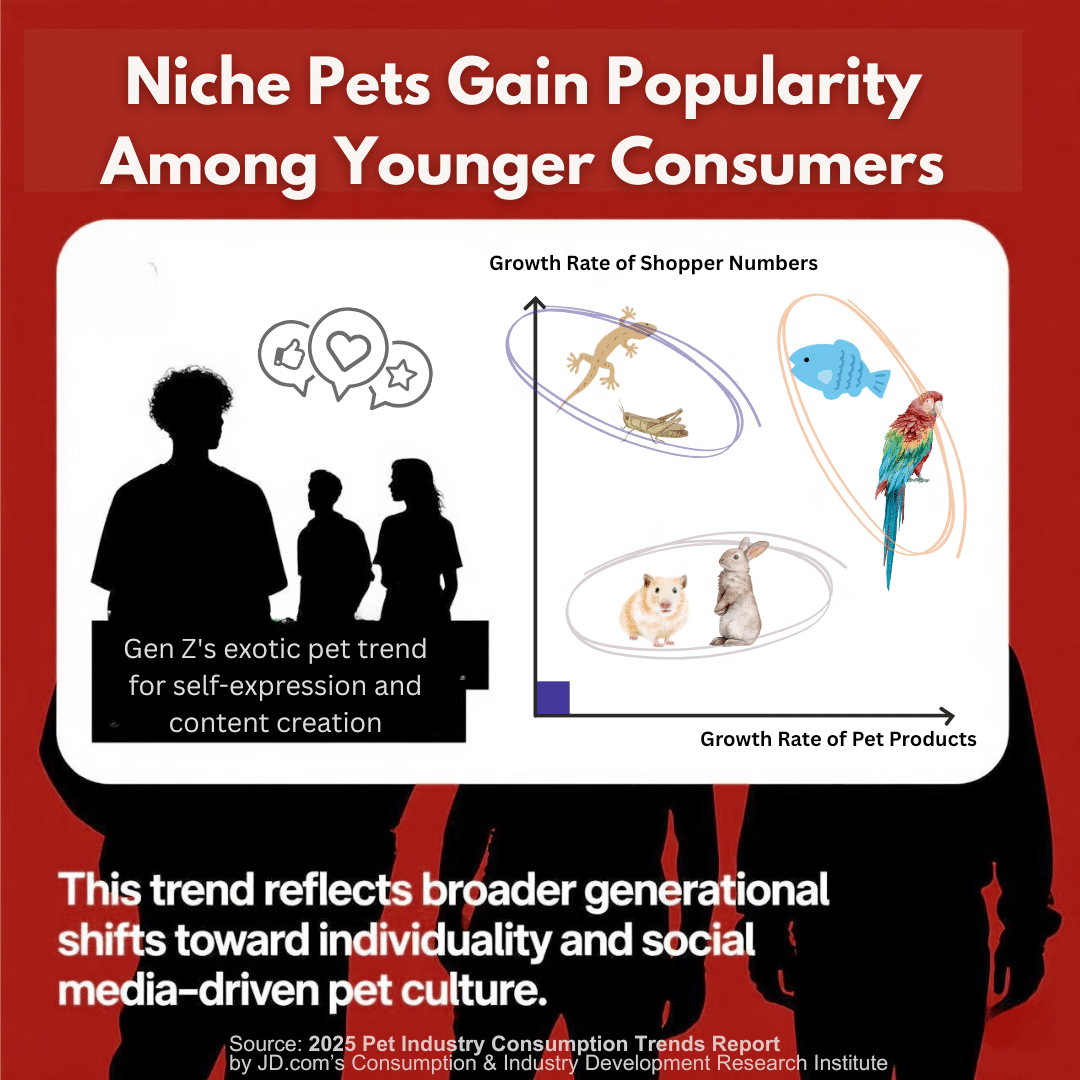Nov 27, 2020|
In-Depth Report: Embracing Changes in China’s Mother and Baby Product Market
by Vivian Yang
Longwu Jiang is the head of the mother and baby business unit under JD Super, JD.com’s online supermarket. It’s a bit counter-intuitive to find out that this youthful man in his early 30s without children, who majored in law at college and used to manage a major phone brand’s sales on JD, knows much more than most mothers about milk powers, diapers, trolleys and more.
“Actually there’s not a big difference between selling phones and milk powers,” said Jiang. “It’s all about product circulation, and coincidently both categories have implemented registration systems with strict government supervision in China.”

Longwu Jiang, Head of JD Super’s mother and baby business unit, JD Retail
With over 10 years work experience at JD.com, Jiang has experienced China’s rapid e-commerce development firsthand, which has helped him to see the essence of the business as well as deal with policy and market changes.
Against the backdrop of China’s demographic structural changes and the impact of COVID-19, Jiang elaborated his observations on the trends of China’s mother and baby product market.
Since China introduced the two-child policy in 2016, the growth of China’s mother and baby market has been accelerating and shows no sign of stopping in the years ahead. Despite the birthrate now being on a downturn after a rapid rise immediately following the announcement of the new policy, with an annual birth peak in 2017 of 17.23 million. Whereas the rising momentum of consumption upgrade keeps the market competitive and prosperous.
Consumers for the mother and baby category are highly sensitive to products’ channels, quality and services. This gives JD an advantage to stand out in this market, as China’s largest retailer that promises authentic products and premier shopping experiences for its customers.
A trustworthy platform
For many Chinese customers, online shopping has become a part of their life—especially for standardized products like baby power and diapers that JD offers guarantees on sourcing and delivery services.
Leveraging the scale effect through its B2C model with over 441 million active users on the platform to date, JD has become the leading retailer worldwide for many global brands of mother and baby products, including Wyeth, Friso, Unicharm, Merries, Abbot, Biostem, Pigeon and more.
 Industry partners virtually joined JD Super’s 2020 strategy conference on mother and baby category
Industry partners virtually joined JD Super’s 2020 strategy conference on mother and baby category
International data analysis firm Nielsen’s latest report showed that over 51% of mobile consumers for mother and baby products in China shopped on JD’s app in 2019, and the ratio will be higher in 2020 as affected by the epidemic outbreak.
“The epidemic accelerated people’s shopping behaviors to shift online,’ said Jiang. From January to April, sales of milk powers and diapers on JD.com soared as people relied on JD ‘s stable supply chain to ensure timely delivery. As the virus situation has gradually calmed in China, sales have increased significantly on JD not only for these two high-frequency stable categories, but also that of baby trolleys, cribs, and outdoors products, especially during the mid-year 618 Grand Promotion and the Singles Day Grand Promotion.
Jiang recalled that in the early days of the epidemic, people were worried about a shortage of diapers which shared the same manufacturing materials with masks. During that time more suppliers chose to sell their products on JD, as buying online was the only option for consumers then and the suppliers trusted JD’s fulfilment ability. At the same time, JD worked actively with the suppliers to prepare its inventory to fully cover the demand surge.
A booming market in lower-tier cities
Jiang is not complacent about the status quo. He pointed out that although JD enjoys a high penetration rate in the first- and second-tier cities, the country’s overall mother and baby product market is highly fragmented and vertical. Brick-and-mortar stores remain the mainstream for many customers, especially in the lower-tier cities.
“There are over 20,000 mother and baby product stores across the country. If you know the owner of a store in your neighborhood very well, like how many children he has, and which school his son goes to, would you prefer to buy things at this store or from some strangers online?” said Jiang. “Trust is the key. And on this point, JD has great potential to grow the market share both online and offline driven by the company’s omnichannel development.”

JD’s mother and baby offline store in Baoji, Shaanxi province
More importantly, lower-tier cities are where the birth rate and spending power thrive in China. According to China Population Report 2020, 65% of the country’s first-tier cities and 68% of second-tier cities have had lower average birth rates in the past 10 years, indicating that cities below the third-tier play a greater role in driving the birthrate and consumption of mother and baby products.
“Chinese parents always give the best to their children,” Jiang stressed. “Consumption upgrade is definitely a trend among customers in lower-tier cities.” People from lower-tier markets have less pressure in their overall lifestyle, especially related to housing costs compared with people from the first- and second-tier cities. As a result, they are more willing to raise two children. JD provides a cost-effective and convenient channel for them to have safer and better quality products that are not often accessible in traditional offline channels.
A new generation of consumers and products
The new generation of Chinese parents born after 1985 are more economically independent than the previous generations, and are therefore more capable of spending for a higher-quality of life and often express these attitudes through consumption.
Nielsen’s research on the industry trends in 2020 showed that products that feature the concepts of organic, nutrition, safe, non-added, pure natural, high quality, environmental-friendly sell well among young parents. For example, in 2019, organic baby food and milk powder achieved 42% and 47% YoY growth respectively.
At the same time, JD is introducing more and more new products and sub-categories to Chinese consumers to meet their increasing demand for healthcare and personal care, such as skincare products for pregnant women, special diapers for sensitive skin, nutrition supplements for newborns and more. This October, JD released China’s first industry report on baby nutrition supplements, which analyzed the industry’s opportunities in the post-COVID era, and aimed to promote a healthy business ecosystem in collaboration with its brand partners such as Gerber, Little Freddie, Nature’s Way, Heinz, and Biostime.
Furthermore, by leveraging JD’s big data and consumptions insights, Jiang’s team has been collaborating closely with brand partners in the R&D and designing process to create more customized and personalized products, known as the C2M (Customer-to-Manufacturer) model.
Take the diaper packaging design of Japanese company Unicharm as an example. Through studying customers’ shopping behaviors, comments and surveys on JD’s platform, the team identified a potential need of larger package size for this product. Then JD and Unicharm worked together to upgrade the diaper package capacity from 54 pieces to 68 pieces and introduced to the market. It is estimated that sales of this type of diaper rose by 420% in 2019.

Jiang spoke at JD Super’s strategy release conference
“The only constant in the world is change,” said Jiang at the 2020 strategy release conference. To embrace the changes and future of this industry, JD will deepen its strategy implementation in introducing more new brands, differentiated products and sub-categories of mother and baby products. It will also focus on building up its omnichannel initiative through holistic logistics management and cooperation with offline partners, further expanding in lower-tier cities and offering more trendy marketing activities such as short videos and livestreaming to meet customers’ needs and improve their shopping experience.





 This Harbin tourism boom has also spurred a surge in sales of winter apparel. JD.com’s data indicates a rapid growth in the sales of warm clothing items such as down jackets, snow boots, and thermal underwear between January 1st and 7th. The sales growth is especially pronounced in southern provinces and cities such as Jiangsu, Zhejiang, Guangdong, Sichuan, and Shanghai. Notably, tall snow boots registered a 206% year-on-year increase in transactions, while padded cotton caps and thickened long down jackets soared by 158% and 134%, respectively. Beyond clothing, travel gear has also seen a considerable uptick, with a 98% year-on-year growth in transactions for large suitcases and travel backpacks in these southern regions.
This Harbin tourism boom has also spurred a surge in sales of winter apparel. JD.com’s data indicates a rapid growth in the sales of warm clothing items such as down jackets, snow boots, and thermal underwear between January 1st and 7th. The sales growth is especially pronounced in southern provinces and cities such as Jiangsu, Zhejiang, Guangdong, Sichuan, and Shanghai. Notably, tall snow boots registered a 206% year-on-year increase in transactions, while padded cotton caps and thickened long down jackets soared by 158% and 134%, respectively. Beyond clothing, travel gear has also seen a considerable uptick, with a 98% year-on-year growth in transactions for large suitcases and travel backpacks in these southern regions. Photo Gallery: This Week at JD (November 23rd – November 27th)
Photo Gallery: This Week at JD (November 23rd – November 27th)



